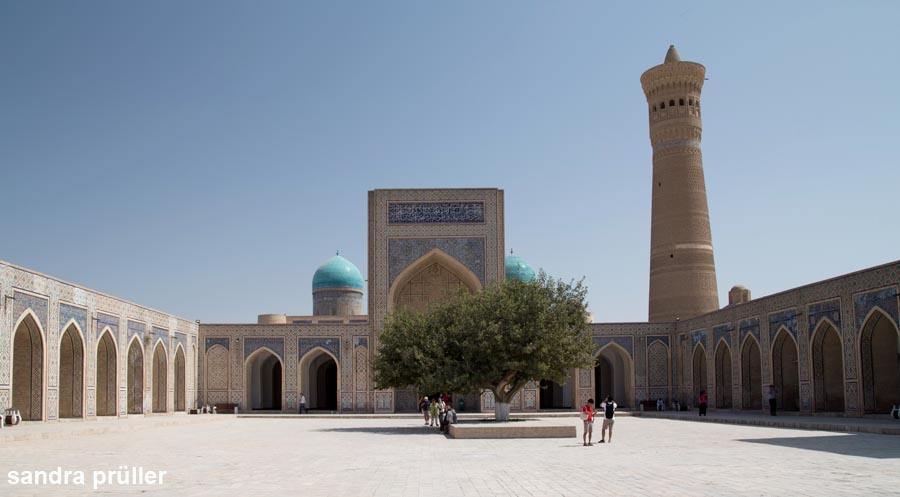
Kalon Mosque
The most famous attraction of Bukhara is the Kalon Mosque. The Kalon Minaret is the landmark of the city. It was built in 1127 under Arslan Chan and is 46 meters high. The minaret, ornately decorated with brick patterns, tapers towards the sky to widen again after a wreath of keel-bowed windows followed by murqarnas dekor. The minaret has the color of the bricks, only at the narrowest stele, there is a band of colored, glazed bricks.
The Kalon Mosque is the second largest in Uzbekistan after the Bibi Xanom Mosque in Samarkand. The mosque was built around 1514 in the style of the Timurid dynasty, which was expelled in 1500 from Uzbekistan. The focal point of the Kalon Mosque is the large rectangular square, which is enclosed by an arched gallery. On the west side of the courtyard is the main hall with a large dome. The courtyard is dominated by four grand portals (Pishtaq), the largest are to the east and west, and the north and south gates are smaller. In the photo you can see the eastern Pishtaq and the Kalon Minaret. The two turquoise domes are already part of the Mir-i-Arab Madrese behind.
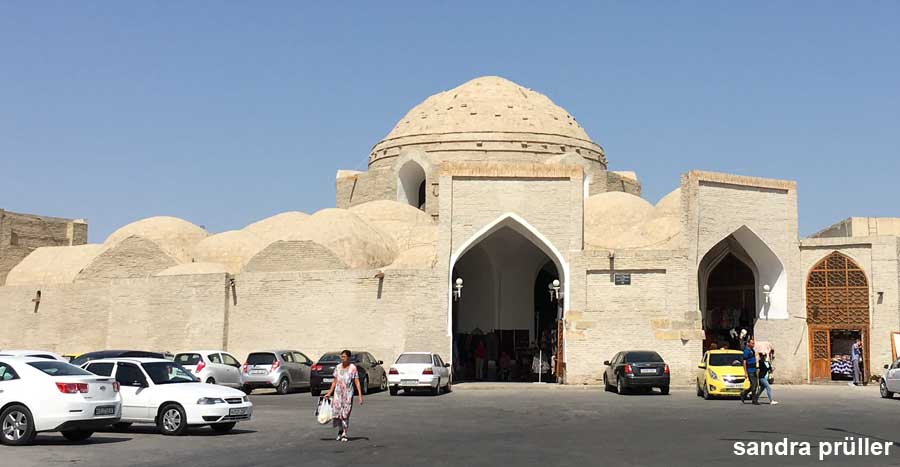
Bazaars of Bukhara
Bukhara was on the historic Silk Road and was a central marketplace where several trade routes intersected. In Bukhara there is not one huge bazaar like in Istanbul or Damascus, but several small bazaars lined up on the main street Khakikat. The bazaars of Bukhara are all built according to the same principle. There is a large dome in the middle and smaller vaults around it. The central dome is used to illuminate the interior. The market halls are built of unadorned brickwork and are thus different from religious buildings. The market halls were built in the 16th century, today three of the old bazaars are preserved.
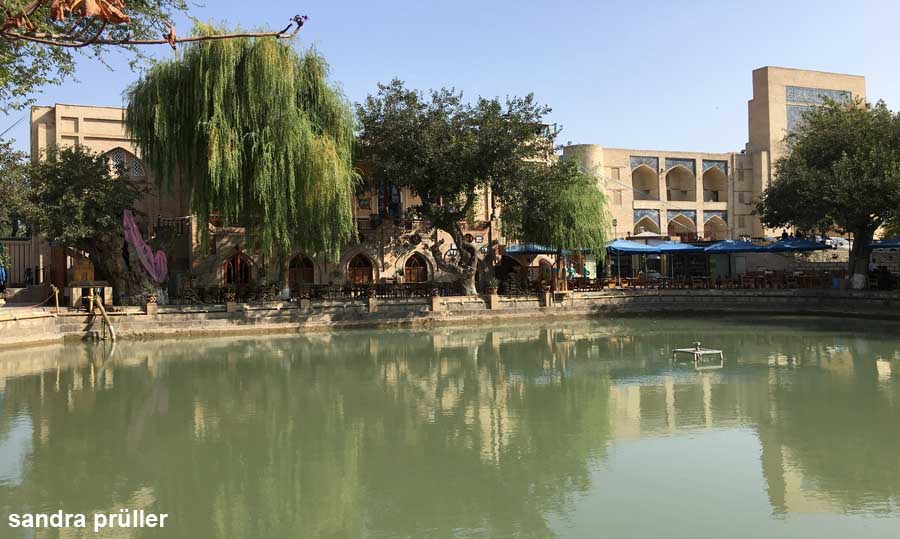
Labi Hauz
The "Labi Hauz" is a water basin in the old city of Bukhara, which used to serve as the water reservoir of the city. It was built in 1620 by Grand Vizier Nadir Divan-Beghi. The stagnant water heats up in the summer and is a hygienic problem, tourists should not bathe in it. Around the small pond are several beautiful buildings. The Khanaka Nadir Divan-Beghi on the west side of the water basin was built in 1620 and formerly served as the Sufi Temple. The mosque and medrese Kukeldash is located north of the square. It is the oldest building on Labi Hauz. The 1569 built medrese is named after the army commander Kulba Kukeldash. In the east of the "Labi Hauz" is the madrass Nadir Divan-Beghi which was built in 1622 as a caravansary. Worth seeing is the entrance portal with imaginative birds flying under a sun.
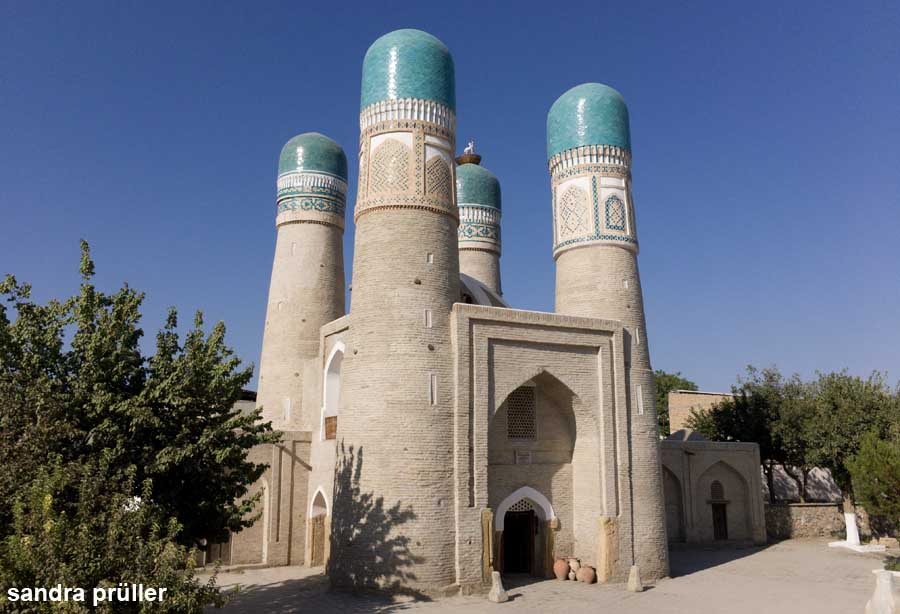
Chor-Minor Mosque
The mosque Chor Minor is located on the edge of downtown Bukhara, about 500 meters east of the "Labi Hauz". It is reminiscent of the architecture of the Timurids, but is much younger. The Choir Minor Mosque was built in 1807 by the rich merchant Xalfa Niyozkul. The name "Chor Minor" means 4 minarets. This is normal for Turkish mosques but the absolute exception in Uzbekistan. The four minarets are each 17 m high. The choir Minor stands on a base of 19 x 9 m and is spanned in the middle by a dome. The structure consists of bricks, of which only the cupolas of the minarets were covered with glazed tiles. Formerly stood next to the choir Minor a medrese and a summer mosque. Both buildings are now gone. Choir Minor has become Bukhara's landmark due to its unusual shape and is one of the city's most popular attractions.
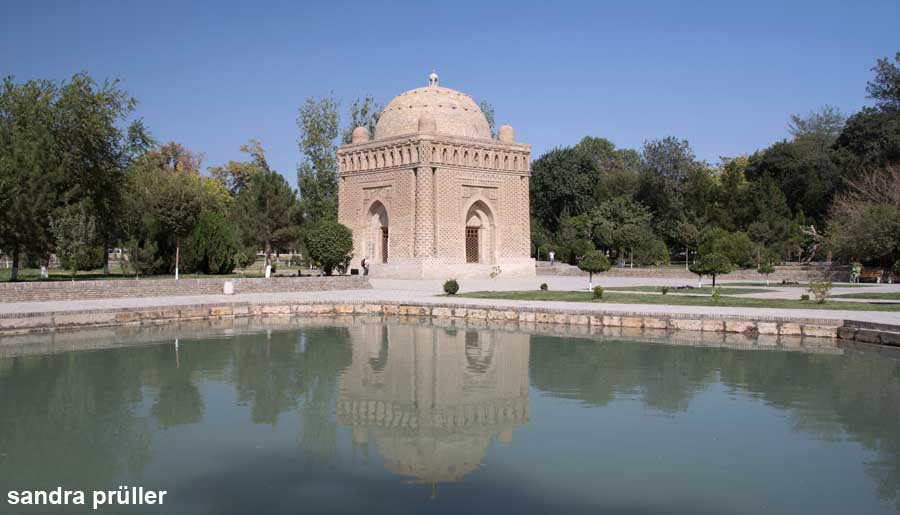
Samanid Mausoleum
Between 892-1005 AD, Bukhara was the capital of the Samanid dynasty. The Samanid Mausoleum was built by Ismail Samani around the year 900 for his father. Later he and his sons were buried here. The artistic use of masonry is unique for this time. On a square ground plan rises the Samanid Mausoleum with 4 identical facades, to be dominated by a dome. The Samanid Mausoleum in Bukhara is one of the few surviving structures in Central Asia from this period. The mausoleum is located west of the city center in a large park with a water basin. Samanid Park is home to another 12th-century mausoleum of Chashmai Ayub and the 1998 Mausoleum dedicated to the Islamic scholar Ismail al Buchari (810-870).
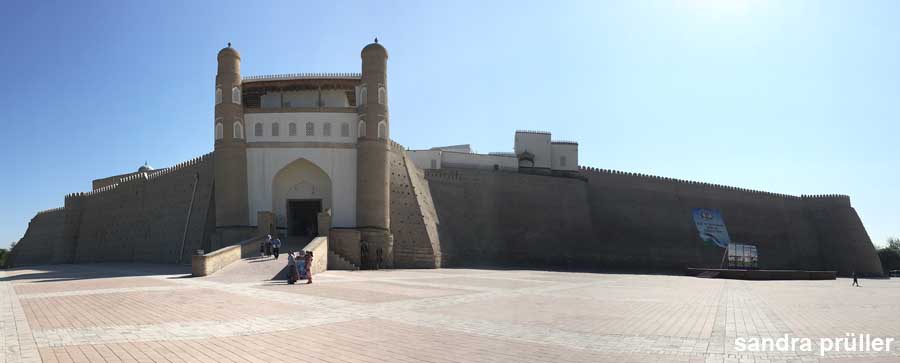
Ark
The Ark is the citadel from where the Emir also called the "The Sun of Bucharas" ruled. There was a palace in the citadel and many other buildings needed to administer a city at that time, such as a prison, arsenal, coin, warehouses, workshops and a mosque. The Ark fortress was built around the year 1000 AD as a castle for the ruler. The Ark had two gates, one in the east and one in the west. The eastern gate was destroyed, today you enter the Ark via the western gate, which is located at the Registan. Since the fortress was destroyed several times, today's appearance goes back to the reconstruction in the 16th century. In the citadel, the mosque is the most worth seeing building. Most of the fortress is not open to the public, this is where archaeological excavations take place.
Map sights of Buchara
ads
Travel Guide Buchara
ads
ads


